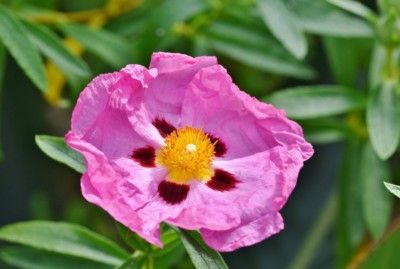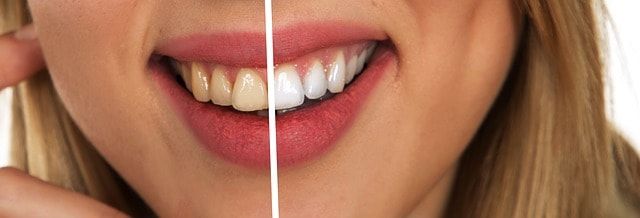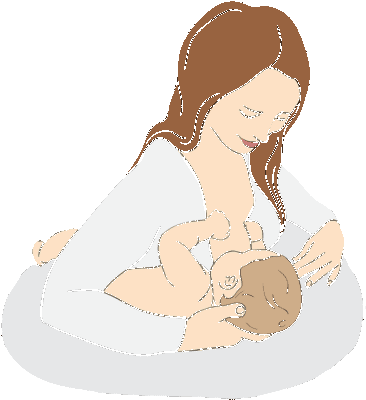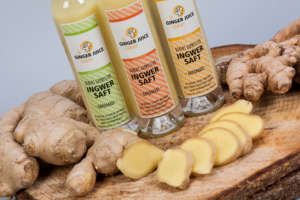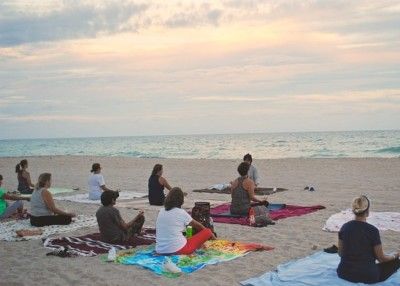The cistus – Cistus incanus as a medicinal plant
The cistus – Cistus incanus can reach a growth height of up to 1.30 meters. The strongly branched bush has opposite leaves, which are somewhat egg-shaped.
The flowers can be white, pink, red or dark red in color and are located in umbels. The bush, which comes from the Mediterranean region and there has the name Greek mountain rose, is now also often represented in Germany.
The cistus – Cistus incanus as a medicinal plant with a broad spectrum of action
That the cistus is also an effective medicinal plant, has now been well researched. It has a wide spectrum of action, because it has anti-inflammatory, antiviral and antioxidant properties and is therefore particularly valuable for our health.
The cistus can be used for various even seemingly incurable diseases. Why?
Since it does not weaken the self-healing powers like antibiotics do. With its cell-protecting function, viruses and bacteria can no longer dock to the cells and prevent them from multiplying.
Studies prove their effectiveness against flu viruses and for colds
There are studies by scientists from Tübingen that the plant can help especially with colds and skin diseases. But their antiviral property takes the fight even against aggressive flu viruses.
Here the researchers were amazed and even stated that the cistus is one of the most powerful medicinal plants.
Active ingredient pholyphenols
Cistus incanus contains the active substance POLYHENOLE – VITAMIN P. Polyphenols are secondary plant substances. These serve the plant as bioactive substances in the form of dyes, flavors and tannins, the vegetable tannins.
Pholyphenols form within the secondary plant substances again a separate group, in which quite different substances with various functions are summarized.
The spectrum of polyphenols can provide comprehensive protection. They can inhibit the formation of cancer, fight microbes and strengthen the immune system.
They have anti-inflammatory, anti-allergic and vasodilating properties – and are powerful antioxidants. These in turn trap so-called free radicals and thus help to prevent their negative impact on various metabolic processes.
In fact, rockrose is the most pholyphenol-rich plant in Europe.
Use the cistus – Cistus incanus as a tea
The most common way to consume cistus is to prepare an infusion from it. Here one takes the herb of the plant, i.e. leaves and blossoms, which were usually dried before. These are brewed with hot water, left to infuse briefly and then strained.
The longer the tea brews, the stronger the dosage becomes and is also noticeable in the taste. Who does not like the pure taste of the cistus so at all, can refine it also something with lemon, honey or even some ginger.
This tea can also be used as a gargle for throat and pharynx problems or even against gum inflammation.
Important is, here can also be acted preventively, by taking 2-3 cups of the cistus tea daily and thus prevents that viruses settle in the body and it comes to the species-specific symptoms of flu.
Other possible applications
Other possible preparations are tinctures, oils and ointments. Especially the oils and ointments can for specific skin diseases and – complaints to the employment come.
The tincture can also as a disinfectant can be taken by putting a few drops of it in the hand. Another important preparation from the cistus leaves and flowers is a vinegar extract. Vinegar and cistus together help to disinfect, z.B. Trash cans, doorbells, etc..
Cistus extract has shown antiviral, anti-inflammatory, antioxidant, astringent and antimicrobial properties in various studies. It can be used against various viruses. These include HI viruses, influenza viruses and Ebola viruses. It is an entry inhibitor, d.h. can inhibit the attachment of viruses to the host cells.
And maybe it can help with the new Coronavirus (SARS-CoV-2 / Covid-19) do its good services. At least it can effectively reduce the risk of infection. This is true so far at least for cell and animal studies!
In humans, there are already clinical tests on it with a few hundred test subjects. Side effects are not known until now!
History and Lore of the Gods
The resin from the cistus herb is called Labdanum. In the middle of the 14. Century, when the black plague raged in Europe, the people took this resin and burned it in their dwellings.
This kind of fumigation helped body, its clothes and of course the living room utensils to become free from viruses. What was left behind was also a very sensual scent.
The gods and goddesses of Olympus once held council and determined plants that should serve special purposes. The gods decided to make the cistus flourish as a medicinal plant, so that it could heal the wounds from the battles.
The goddesses were then very angry, because for them it was certain that the cistus with its wonderful fragrance could only be there for the beauty. Then the gods intervened and the rockrose became a medicinal plant, but also a plant for the care of beauty.
Unfortunately, due to EU regulations, it is not allowed to offer the rockrose – Cistus incanus as food. This is due to the fact that in 1997 the plant was not known as food. Unfortunately, the Novel Food Regulation has not yet managed to approve the cistus as a food.
When buying, you should pay attention to natural quality, which do not contain additives. A good quality is also when it contains few stems, but many finely crushed leaves.
Naturally produced cistus tea, cistus extract and cistus drops can be purchased from the company. Herbs Lötsch about https://www.herb-loetsch.ch can be purchased.
Author: Haideé Zindler, herbalist and author of numerous books on herbs and divinities, https://www.ayons-welt.de
Book on the subject:
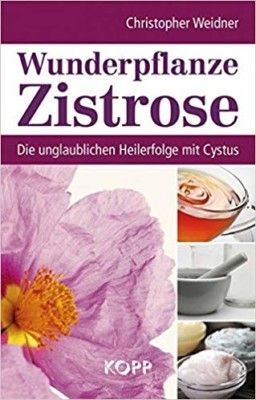
Miracle plant cistus: The incredible healing successes with Cystus
Author: Christopher Weidner,
Paperback: 96 pages,
Publisher: Kopp Verlag; Edition: 4., Edition August 2014 (29. September 2011),
Language: German,
ISBN: 978-3864450136.
Order possibility
